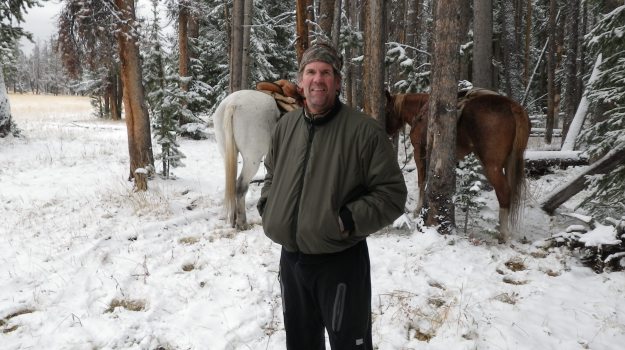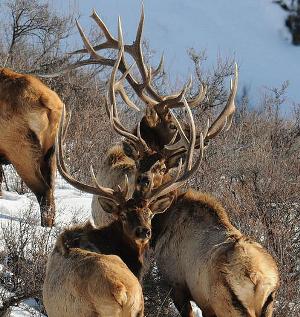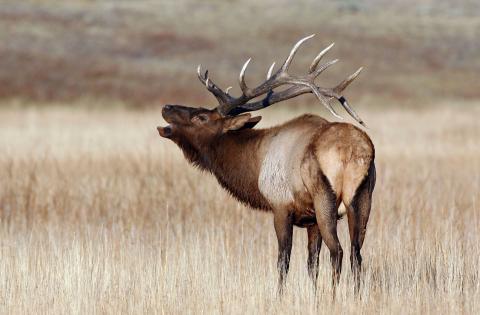
The real key to finding elk in the late season is being familiar with the travel corridors they use when they come out of the high country and/or when they leave the parks. Typically, elk will follow the same migration routes every year, depending on when cold weather hits and where the food source is that they normally go to. Those are the two main reasons that makes scouting over the internet and the telephone critical to success, particularly in an area you’ve never hunted before. This reason is also why many late-season elk hunters prefer to hunt with a guide, especially a guide who knows the region and has hunted there for many years.
 Although your rifle and bow are necessities for taking an elk, more importantly, quality optics are the most-critical tools to help you find the elk you want to take. A late-season elk hunter needs to keep plenty of open ground between him and the elk. When possible, the hunter needs to be on higher ground than where you expect to see the elk. Optics are really important early in the morning, because the elk may have bedded-down overnight, or they may have been grazing slowly after dark. Early in the morning you want to try to find and see a herd of elk and possibly identify a bull you want to go after. You may have to spend the rest of the day attempting to reach a place to make a stalk on that bull or to ambush that bull.
Although your rifle and bow are necessities for taking an elk, more importantly, quality optics are the most-critical tools to help you find the elk you want to take. A late-season elk hunter needs to keep plenty of open ground between him and the elk. When possible, the hunter needs to be on higher ground than where you expect to see the elk. Optics are really important early in the morning, because the elk may have bedded-down overnight, or they may have been grazing slowly after dark. Early in the morning you want to try to find and see a herd of elk and possibly identify a bull you want to go after. You may have to spend the rest of the day attempting to reach a place to make a stalk on that bull or to ambush that bull.
But one wild card often hits late-season elk hunters when they least expect it - storms. Rain, snow or sleet can begin anytime during your hunt, and you can get some bad, nasty winds. You need to know where the elk go when bad weather hits. They usually prefer to bed down or feed on south-facing slopes when a weather front moves in, because food is more accessible on those southern slopes. Too, the south-facing slopes are usually warmer than the north-facing slopes. You also want to look for cover that elk can get under until the storm passes. When the bad weather hits, you must have waterproof and warm gear. Depending on the severity of the storm, you may want to start looking for shelter where you can stay until after the storm passes. If you're close enough to get to camp before one of these really-bad storms hits, you need to make sure you know in which direction your camp is.
Day 2: How Late Season Elk Hunting Is Different from Early Season Elk Hunting
Tomorrow: What You Must Understand about Weather – When to Hold and When to Fold



























